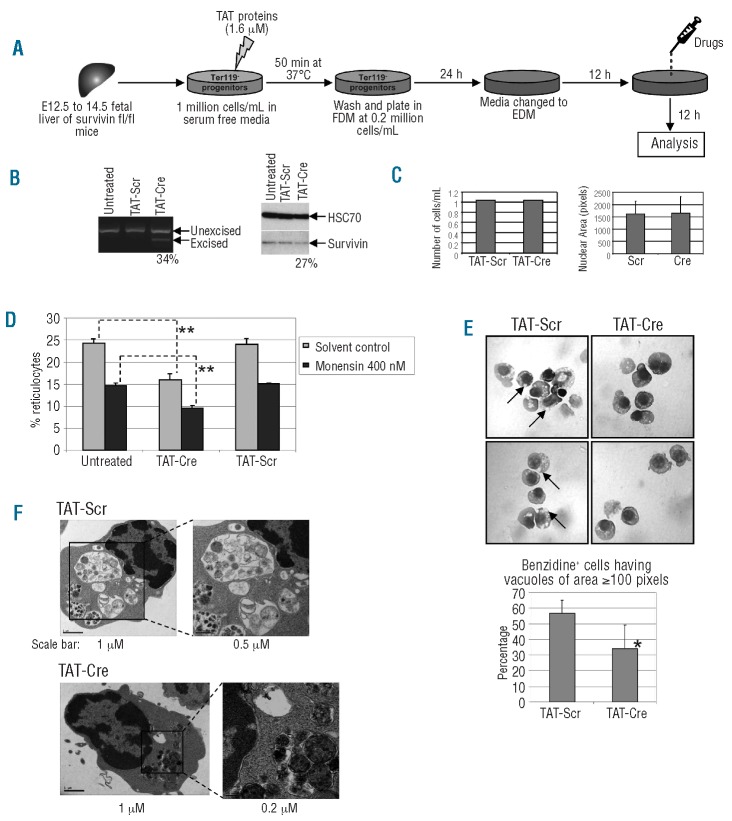Figure 5.
Loss of survivin inhibits enucleation by suppressing vacuole formation. (A) Schematic depiction of the experimental approach. (B) The extent of survivin gene excision was evaluated by PCR (left) and the level of survivin protein in cultured cells was measured by Western blot analysis (right) 36 h after treatment. The percentages of excised allele and percent reduction of survivin protein, determined by ImageJ software, are shown below the blots. HSC-70 was used as a loading control. (C) The numbers of live cells at 36 h, enumerated by trypan blue staining, are shown for TAT-Cre and TAT-Scr conditions (left). Nuclear size of benzidine positive cells after 48 h of culture were determined by ImageJ software and the mean ± standard deviation of 3 independent experiments are shown (right). D) Effect of TAT-Cre or TAT-Scrambled (Scr) peptide treatment, or no treatment, on enucleation of Ter119- Surfl/fl erythroid progenitors. Dark bars correspond to cultures that were also treated with 400 nM monensin after 36 h of incubation. Data are shown as mean ± standard deviation for 3 independent experiments. **P<0.01. (E) Top: benzidine and hematoxylin stained cytospins of TAT-Scr and TAT-Cre treated Surfl/fl erythroid progenitors after 48 h of culture. Cells were viewed using a light microscope with 100X oil immersion objective. Representative images for each condition are shown. (Top) arrows point to large vacuoles in control cells. (Bottom) the number of benzidine positive cells that harbored vacuoles with an area larger than 100 pixels were enumerated and the means ± standard deviations of 5 independent experiments are shown (right). *P<0.05. (F) Transmission electron microscopic images of Surfl/fl fetal liver erythroblasts cultured with TAT-Scr, TAT-Cre, or 1 μM monensin along with control are shown.

